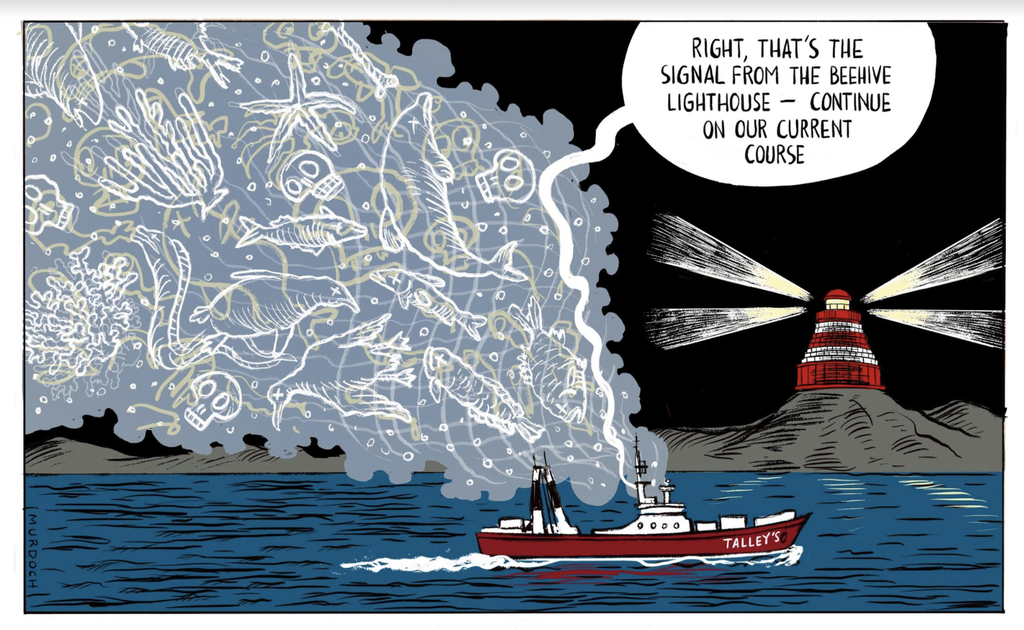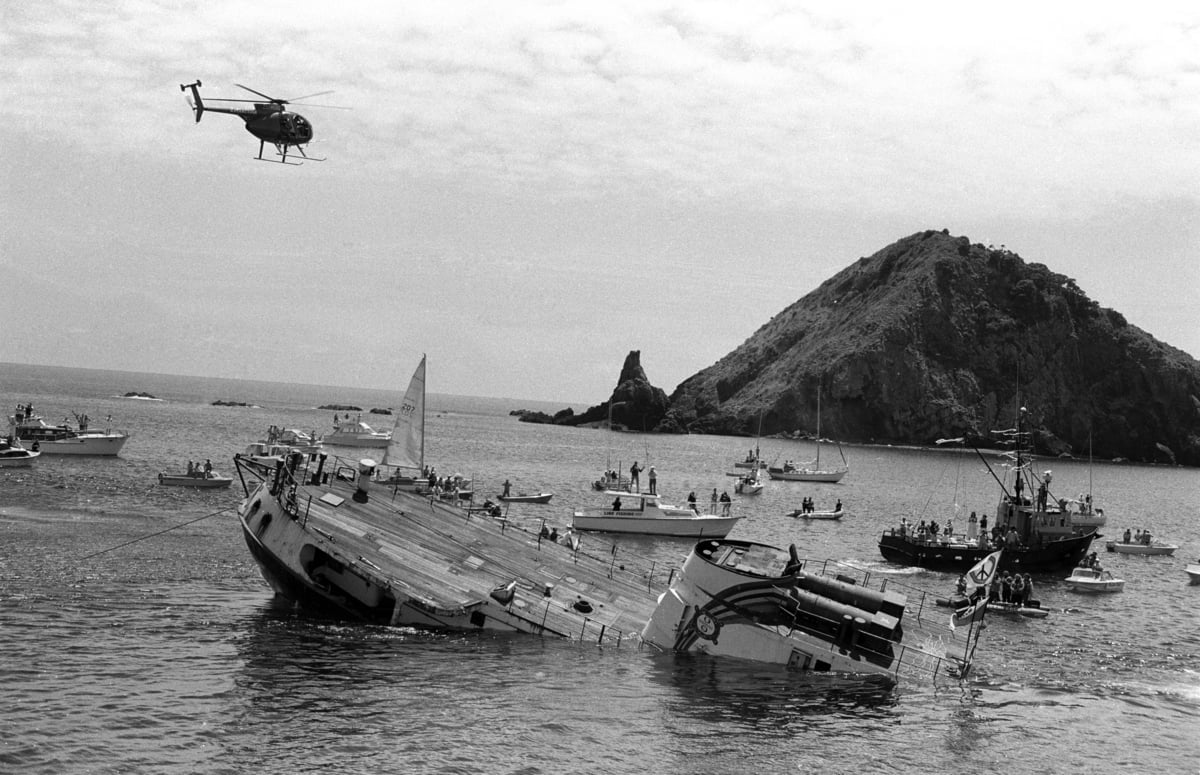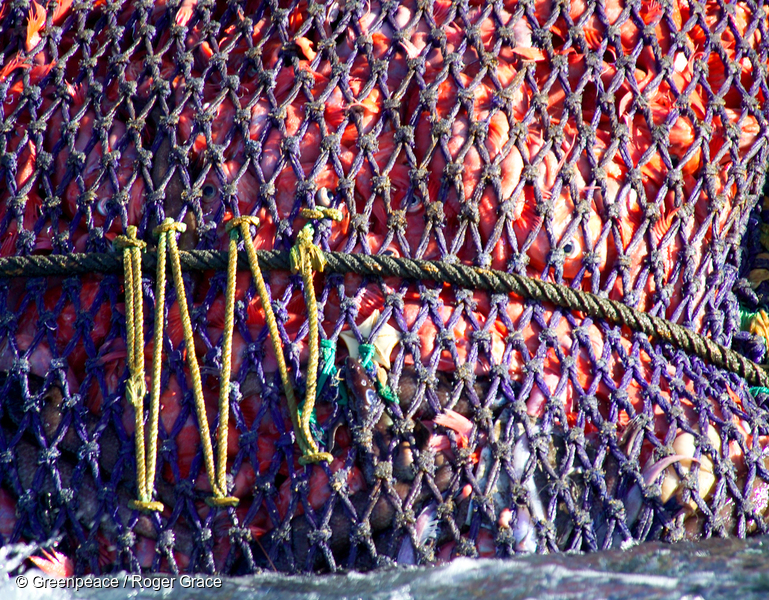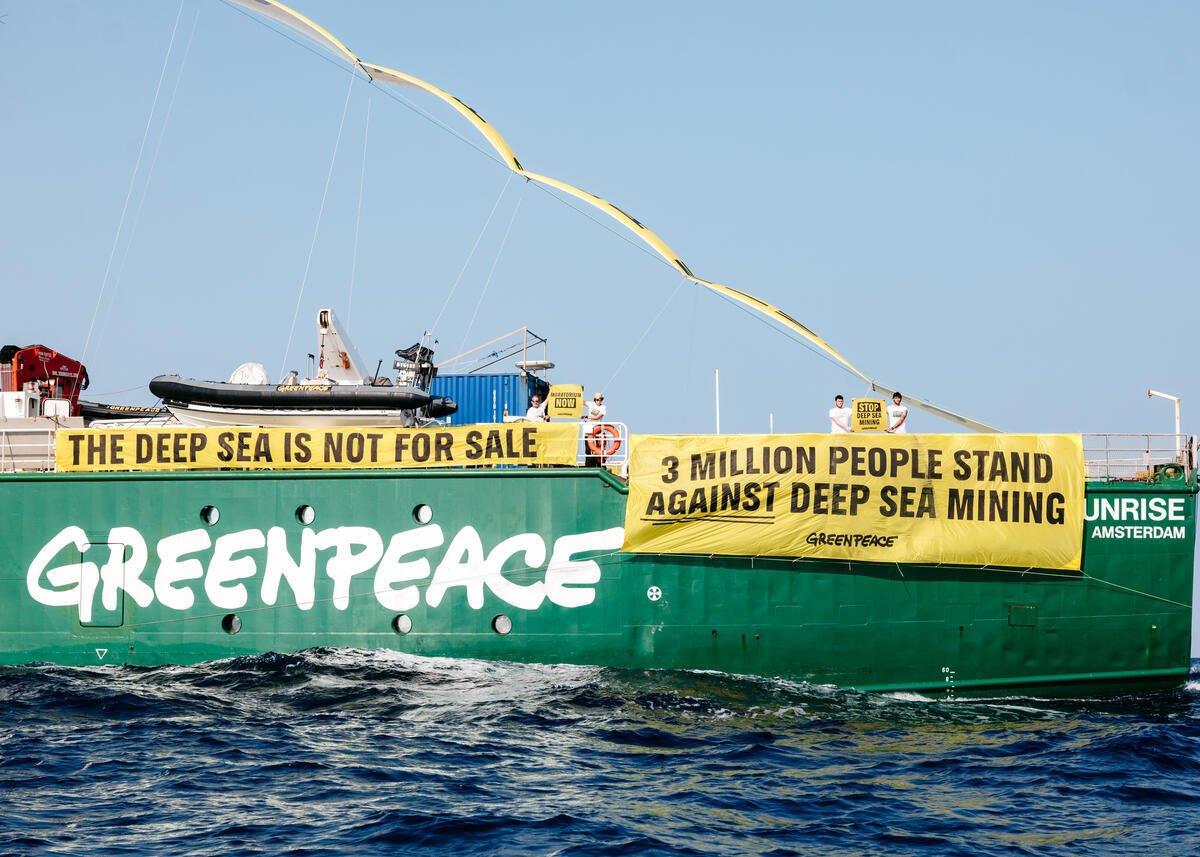A leaked recording, released this week, hears the Minister of Fisheries confirm that New Zealand First has been blocking Government action to protect the oceans from commercial fishing, specifically the long-awaited cameras on boats programme.
In the damning recording, Stuart Nash can be heard saying that NZ First’s Winston Peters and Shane Jones have opposed changes to the commercial fishing industry, and increased ocean protection measures that would affect it.
Nash says: “I’ve got to play the political game in a way that allows me to make these changes. Winston Peters and Shane Jones have made it very clear that they do not want cameras on boats.”
Despite not having any official stake in the Fisheries portfolio, NZ First has been pulling the strings behind the scenes on these decisions all along, with Shane Jones living up to his “ghost fishing minister” status.

This news comes just weeks after Jones disputed assertions he was getting involved in fisheries decisions, calling them: “poisonous gossip from political pufferfish.”
In the recording Nash is heard promising that rolling back cameras on boats legislation will be better in the long run, as an independent review of fisheries will be undertaken instead. That independent review was blocked by New Zealand First as well.
This confirmation from Nash is important because it shows that what we’ve been calling for – New Zealand First to be excluded from decisions on commercial fishing and ocean protection – is both necessary and urgent. Something clearly stinks in the beehive, and those stymying action on these important issues have been well and truly outed this time.
The fact is the oceans don’t have time to wait. In New Zealand, we have the highest proportion of threatened native species, with many of these belonging to the marine environment. 90% of seabird species in Aotearoa are threatened or at risk of extinction, including some of our most cherished penguin varieties. Māui and Hector’s dolphins have been on the decline for decades, and New Zealand sea lions are also at risk from fishers’ nets.
But to change the fate of these creatures and our oceans as a whole, we’ve got to be able to stand up to the commercial fishing industry. We know that marine life is dying as a result of it, but we lack the ability to truly quantify this because we don’t have appropriate monitoring to do so.
Now that the truth has been revealed, and it’s crystal clear who’s behind the softly-softly approach to commercial fishing regulation, it’s time the coalition Government gave us a show of faith. As the one who’s name is on the Ministry, it’s up the Stuart Nash and our Prime Minister to give New Zealanders the transparency they deserve, and show NZ First who’s boss.
A timeline of this Government and fisheries decisions:
September 2017
The coalition Government is formed between Labour, NZ First and the Green Party.
May 2018
Talley’s owned vessel the Amaltal Apollo is caught illegally bottom-trawling in a protected area in the Tasman Sea.
September 2018
West Coast hoki fishery collapses, the very fishery Greenpeace exposed as having far more catch that was intended in leaked documents earlier in the year.
December 2018
Plans for an independent advisory panel, to give expert advice to the Government on making fishing sustainable for the long term are scuppered by New Zealand First.
January 2019
The Government quietly delays cameras on boats rollout again till later in 2019.
January 2019
The Government lobbies to get Talley’s off the international fishing blacklist, after they were caught bottom trawling in a protected area for orange roughy. They promise to prosecute at home.
March 2019
Greenpeace writes a submission for a fisheries review, calling for goals such as cameras on the full fleet, zero bycatch goal, and no new quota.
June 2019
The draft Māui and Hector’s plan is released and is heavily criticised for pandering to the commercial fishing industry. While only giving one option that would satisfy dolphin experts, the remaining options skirt round excluding fishing from their known habitat.
Despite the modelling used to inform the draft plan also being criticised by the scientific panel that reviewed it, the draft is released with heavy emphasis on toxoplasmosis rather than fishing methods that kill dolphins.
Greenpeace delivers a petition signed by nearly 60,000 New Zealanders, and 7,000 individual submissions on the Threat Management Plan – calling for the strongest protections for Māui and Hector’s dolphins.
June 2019
The Government releases plans to rollout cameras on boats in Māui dolphin habitat, but not Hector’s. Under the cover of this announcement they also quietly delay to getting full fleet covered until a ‘holding date’ of July 2020.
September 2019
Major UN report warns unless we reduce pressure on the oceans, including from fisheries, there will be widespread impacts from further extinctions to exacerbation of the climate crisis.
September 2019
Government announces orange roughy catch increase, a species that New Zealand fishing uses bottom trawling to catch.
November 2019
Greenpeace reveals the New Zealand bottom trawling industry destroyed up to 3,000 tonnes of coral in the past year and takes the demand to end bottom trawling on seamounts to the lawn of parliament.
December 2019
Government delays Māui and Hector’s dolphin Threat Management Plan will be delayed, without giving a firm date for delivery.
February 2020
At the South Pacific Regional Fisheries Management meeting in Vanuatu, fishing industry lobbyists and the NZ Government pushed for less protections for vulnerable marine ecosystems from bottom trawling. New Zealand was one of the few voices in the room advocating for less ocean protection, while other groups such as the EU, attempted to increase safeguarding.
February 2020
Undeclared donations are revealed from commercial fishing companies including Talley’s to the NZ First Foundation. Greenpeace calls for NZ First to be locked out of decision making on fisheries and ocean protection as a result, and this is met with dismissal from the Government.
May 2020
The Seabird rescue plan is released by Government, aiming to tackle the 90% of seabird species here that are threatened or at risk of extinction. Despite bold rhetoric, the plan puts in place no mandatory legislation to prevent seabirds for dying on fishing lines. Instead, it asks for voluntary measures to be adopted by the fishing industry.
June 2020
The cameras on boats programme is quietly delayed (again) for fifteen months, making the date of completion October 2021. Environmentalists including Greenpeace and Forest & Bird criticise the move for once again pandering to commercial fishing.
June 2020
Prosecutions of the Talley’s vessel Amaltal Apollo for bottom trawling in a protected area have still not been completed. Two years after the offence. The ship continues to fish in New Zealand waters.
Minister of Fisheries Stuart Nash recorded saying NZ First are blocking protecting the oceans from commercial fishing.




